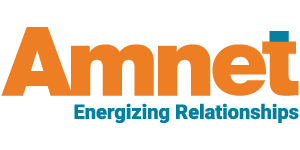[Approximate Reading Time : 4 mins]
STEM education and research refer to a curriculum involving four specific disciplines: science, technology, engineering, and mathematics. STEM skills assume importance because they help us innovate to harness science and technology to solve problems. STEM learning promotes critical thinking, technological knowledge, and communication skills.
There is no denying the enormous growth witnessed in STEM occupations over the past couple of decades. From 2005 to 2015, STEM employment grew over 25 percent, while non-STEM employment was about one-fifth of this. The predictions of the U.S. Bureau of Labor Statistics indicate that this pace is bound to continue over the next decade. It is estimated that STEM occupations will grow 8 percent by 2029 compared to 3.7 percent in non-STEM sectors.
Look Forward to These Developments
The onset of the COVID-19 pandemic changed the face of education in countless ways, more than one could imagine, in months! STEM education has not remained untouched, and the impact is visible in these trends anticipated in 2022.
Continued use of eLearning videos: During the pandemic, online learning became a necessity, and video instruction, a part of life. While traditional classroom sessions are slowly returning, the popularity of eLearning videos is unlikely to wane. Hybrid models in STEM learning where teachers blend virtual and in-person sessions seem to be the way forward. The use of educational video content has come in handy to encourage visual, self-paced learning.
Social media integration in classrooms: The use of social media apps as a means of communicating and sharing information in STEM classrooms is here to stay. Sharing class updates, setting up discussion boards, and showcasing student projects are just some ways in which social media can be used in STEM education and research.
Increased reliance on artificial intelligence (AI) in classrooms: The use of AI in classrooms has helped automate administrative tasks such as grading coursework and exams. This frees up tutors’ time and lets them focus on teaching STEM students and interacting with them. AI-enabled educational assistants that can analyze the strengths and weaknesses of each student are likely to help make STEM education a more personalized experience. AI tools can also be used to gather feedback from students about the course as well as the teacher.
To keep up with these changes, publishers need to step up with efficient innovations and tailored solutions to enable uninterrupted learning and research in this segment.
With our expertise in all types of scientific publishing, we can partner with you in the dissemination of your research. Regardless of whether it’s end-to-end or needs-based services you need, we professionals at Amnet can help enhance the quality of your STEM publishing process. Get in touch with us to find out more about our customizable services.
Sources:
1. https://www.rclco.com/publication/2021-stem-job-growth-index/.
2. https://www.bls.gov/opub/btn/volume-10/why-computer-occupations-are-behind-strong-stem-employment-growth.htm.
3. https://stemeducationjournal.springeropen.com/articles/10.1186/s40594-020-00207-6.
4. https://www.tutor-platform.com/blog/top-trends-in-education-to-keep-up-with-in-2021-2022.
5. https://www.researchgate.net/publication/339828290_Research_and_trends_in_STEM_education_a_systematic_review_of_journal_publications.


